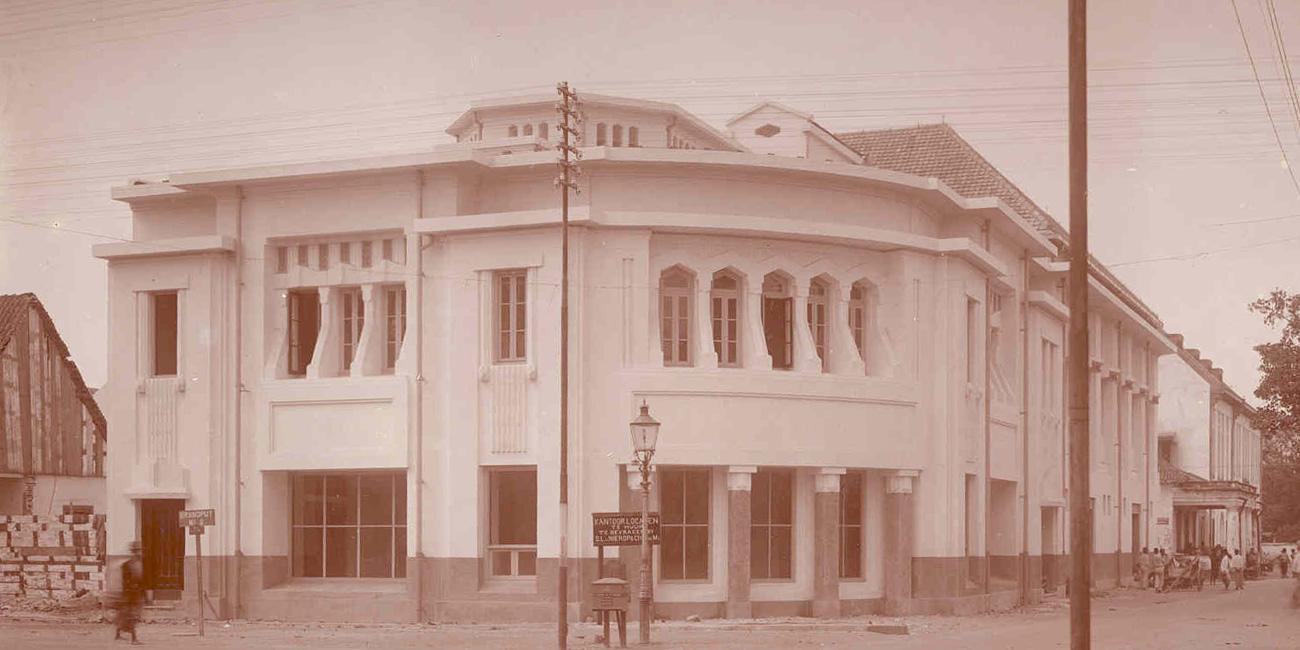
History
The history of Royal BAM Group nv goes all the way back to 12 May 1869. On that date, Adam van der Wal opened a carpentry business in Groot-Ammers - a rural village in the Alblasserwaard region, which lies east of Rotterdam. He specialized in repairing the many windmills in the surrounding area. Van der Wal also built coffins.
At the end of the 19th century, son Jan van der Wal followed in his father’s footsteps. As a construction contractor, he was active in not only his own region, but also further afield, including Vlaardingen and The Hague, where he eventually set up shop.
The third generation in the Van der Wal business – Joop van der Wal, born in 1902 – first studied civil engineering in Delft before joining his father’s company in 1926. The company name was therefore changed into ‘Fa. J. van der Wal en Zoon’ (J. van der Wal & Son).

Batavian
In 1927, the family firm turned into a ‘naamloze vennootschap’ (public limited company). The company was renamed ‘N.V. Bataafsche Aanneming Maatschappij van Bouw- en Betonwerken v/h Firma J. van der Wal en Zoon.’ This mouthful translates into ‘Batavian Construction Company for Construction and Concrete Projects plc; formerly J. van der Wal & Son.’ Little wonder that the abbreviation for the company name, namely BAM, quickly came into use. The word ‘Batavian’ refers to an ancient Germanic tribe living in what is now the Netherlands and, among other things, to the Batavian Petroleum Company, which was the precursor to the Dutch half of the Royal Dutch/Shell Group. BAM had carried out a lot of work for this company. BAM’s management team consisted of Joop van der Wal (1902-1955) and his brother-in-law G. Jonkheid (1898-1979).
Early years
Among the large-scale projects taken on by BAM in its early years were the office building of the Batavian Petroleum Company in The Hague; the building used by the AVRO broadcaster in Amsterdam; the Bronovo Deaconess Hospital in The Hague; a KEMA laboratory in Arnhem; a C&A retail building in Rotterdam; the Blijdorp Zoo in Rotterdam; the City Theater in Amsterdam; as well as the conversion of Soestdijk Palace for the benefit of Princess Juliana and Prince Bernhard. In the course of carrying out these projects, the company set up area offices in Arnhem (1933) and Amsterdam (1934).
The amount of work coming in tapered off during the German occupation of the Netherlands (1940/45) and even completely dried up towards the end of WWII. A few months before the outbreak of war, J.J. van der Wal had published his book ‘The Economic Development of the Construction Industry in the Netherlands’ (Delft, 1940), which, many decades later, is still regarded as a standard work on the history of the private construction industry from the Middle Ages onwards.
Stock Exchange
The company has been listed on the Amsterdam Stock Exchange since 1959. On 31 March 1971, the company name was changed into BAM Verenigde Bedrijven N.V. Since 1973, the company has operated under the name BAM Holding N.V. The old name Bataafsche Aanneming Maatschappij (Batavian Construction Company) remained in use for non-residential construction works until 1992. Since that date BAM is considered to be a name and no abbreviation.
'Royal'
In 1973, BAM adopted a cube-shaped logo, which then still featured nine small cubes on the top surface. When the company marked its 125th anniversary on 12 May 1994, it received the right to add ‘Royal’ to its name.
The development of Royal BAM Group partly resulted from various large and small takeovers in those economic sectors in which the company operates. The most important acquisitions involved the operational division of the Verenigde Bedrijven Bredero in 1988; the non-residential construction and civil engineering divisions of NBM-Amstelland in November 2000; as well as the European construction group HBG (Hollandsche Beton Groep) in November 2002. After the takeover of Bredero, various BAM companies moved into the offices in the town of Bunnik originally built for Bredero.
